Hasui Kawase – Iconic Japanese printmaker
Today we are bringing you the art of Japanese ukiyo-e print maker Hasui Kawase, who was a prominent designer in the “shin-hanga” (new prints) movement of the early to mid 20th century.
Hasui designed almost one thousand woodblock prints over a career that spanned nearly forty years. Towards the end of his life the government recognized him as a Living National Treasure for his contribution to Japanese culture.
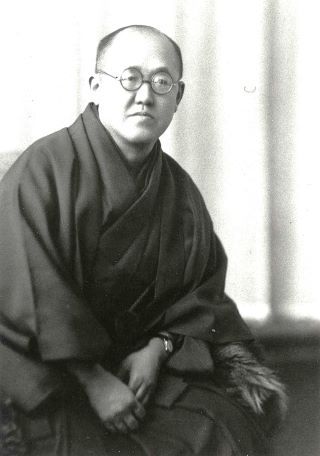
He was born in Tokyo on 18th May 1883, and died there on 7th of November 1957. He was interested in art as a career from an early age, and was encouraged to sketch and draw by his uncle, a Japanese author and journalist, who produced the first manga magazine. He copied the masters' woodblock prints, and studied brush painting and drawing with an art teacher, but only in his spare time.
Hasui worked in the family rope and thread wholesaling business after leaving school, but (fortunately for Hasui at least), the business went bankrupt when he was 26, and this enabled him to concentrate on art full time.
He approached Kiyokata Kaburagi to teach him, as he was a highly respected artist and became a member of the Imperial Fine Art Academy. In his own early career, he had had exposure to making print designs whaich would appeal to western audiences, and so he encouraged Hasui to study Western-style painting first,which he did with Okada Saburōsuke for two years. Two years later he again applied to join Kaburagi’s art academy, and this time he was accepted to study ukiyo-e and Japanese style painting. He mainly concentrated on making watercolors of actors, everyday life and landscapes, many of them were published as illustrations in books and magazines in the last few years of the Meiji period and early Taishō period. 1, 3d
After seeing an exhibition of Shinsui Itō's Eight Views of Lake Biwa, Hasui approached Shinsui's publisher Shōzaburō Watanabe, who asked Hasui to design three experimental prints Views of the Southeast, and the first volume of Souvenirs of Travel of 16 prints followed in 1919, each issued as two prints at a time.1
This was the start of Hasui's prolific production, the most well-known groups of which are:
• Twelve Scenes of Tokyo (1919–1921) click here
• Twenty views of Tokyo, click here
• Selected Views of Japan (1922–1926), click here
• Souvenirs of Travel, Vol. I (1919–1920) and Vol. II (1921), click here and here.
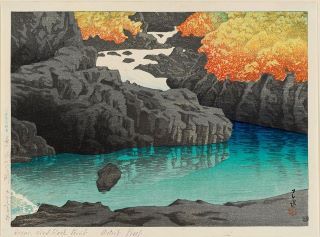
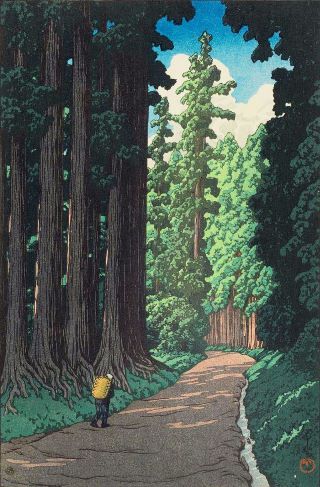
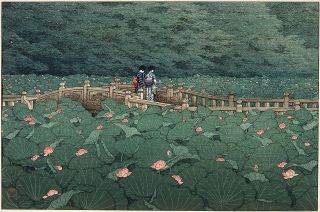
Examples of Hasui Kawase's prints. Credit: Public Domain via Wikipedia
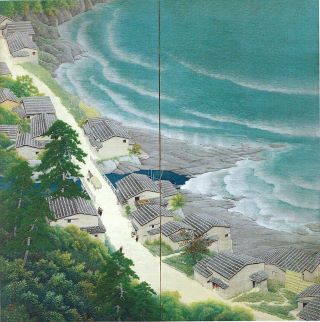
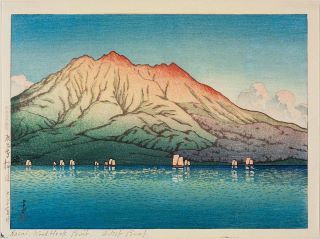
Examples of Hasui Kawase's prints (left one is a two panel screen). Credit: Public Domain via Wikipedia
Hasui also studied the earlier ukiyo-e masters such as Hiroshi Yoshida, Hiroshige and Katsushika Hokusai, all of whom we have featured in the Blog previously. (See the footnotes below for links to these posts). Like these earlier ukiyo-e printers, Hasui's works were commonly landscapes, but very often displayed atmospheric effects such as snow, rain and cloud, in the natural lighting that these inspired.
Hasui designed his first falling snow print in 1920, and it remained a favourite image as you can see from the number of prints displayed here:

His snow scenes are among the most original and best of his works, but the detail of falling snow made life difficult for the printers he employed, as each snowflake had to be meticulously engraved ready for printing.
Woodblock printing requires a close collaboration between designer, engraver, and printer, Hasui said of the relationship between designer and printer:
"In the case of printing we must interact very closely. A less experienced printer might waste seven or eight trial prints before a successful one is made. If someone is experienced we can decide on the final print after two or three trials. It occurs occasionally that despite best efforts, a successful print is still not produced. This is the hard part of composite art. It requires telepathic communication. Unless all parties are completely in tune, the process will not work. When my mind and the minds of the artisans are in complete agreement, a good work can be generated.” 1
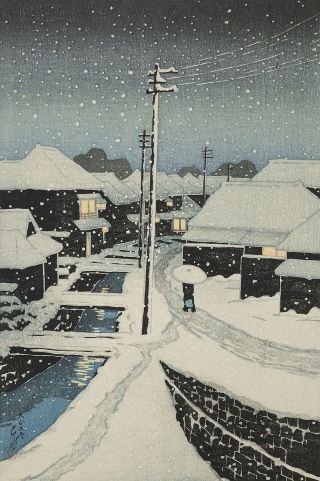
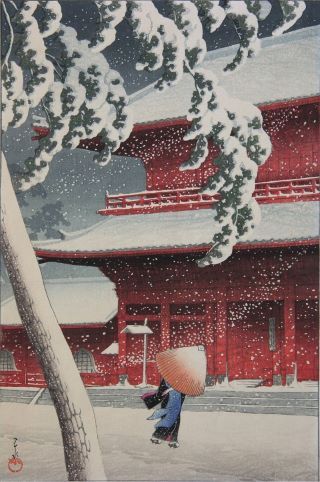
Two examples of Hasui's prints with falling snow. Credit: Public Domain via Wikipedia.
The association with the publisher Watanabe lasted for more than forty years of Hasui’s artistic career, as he was a great advocate of the shin-hanga movement. Publishing his works assured his poularity and fame in Japan, and even survived the huge earthquake in Tokyo and Yokohama on 1 September 1923 which destroyed most of the work at the Watanabe publishing house, including all of Hasui’s woodblocks and over 200 sketches. As a result, any originals of Hasui’s work that pre-date the earthquake are scarce and in high demand.2
Hasui’s prints were also exported to the United States. In 1930, Hasui exhibited 92 prints at the Toledo Museum annual art exhibition in Toledo, Ohio. 2 Hasui’s work was also recognized and collected widely in America due to the efforts of the American art connoisseur Robert O. Muller (1911–2003). Hasui's prints are held in many American art gallerys today as a direct result of Muller's promotion and support.
Hasui Kawase is said to be one of the greatest artists since Hirosige. Kawase's prints are loved because he incorporates his training in western design with tranquil, if less well known, beautiful settings which he captured in his many travels throughout Japan. He thought to be one of the last artists practicing traditional Japanese landscape art, and no-one since has succeeded his legacy. His work is even said to be the inspiration for the very popular animation in Japan today, called Studio Ghibli, which you can read about here if you are interested.
It is a shame that he and his wife Mume didn’t have any children who might have inherited his wonderful talent and legacy......
You might care to browse through more of Hasui Kawase’s work via the following bookmark:

His final work was Hall of the Golden Hue, Hiraizumi (1957), before he died of cancer on 7th of November 1957, aged 74.
Kawase left a prolific body of work: over 1000 designs, 620 woodblock prints and watercolors, oil paintings, traditional hanging scrolls and a few byōbu (folding screens).
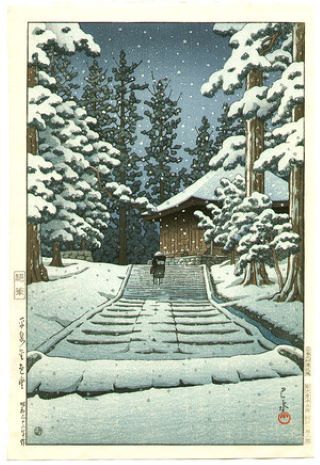
Footnotes
- With thanks to Wikipedia.
- With thanks to Asian Art Collections.com
- Previous Japanese posts by AnArt4Life:
a) Hokasai, click here and here.
b) Hirosige, click here.
c) Hiroshi Yohsida Part 1 and Part 2.
d) The History of Japanese art: Part 1 and Part 2.


